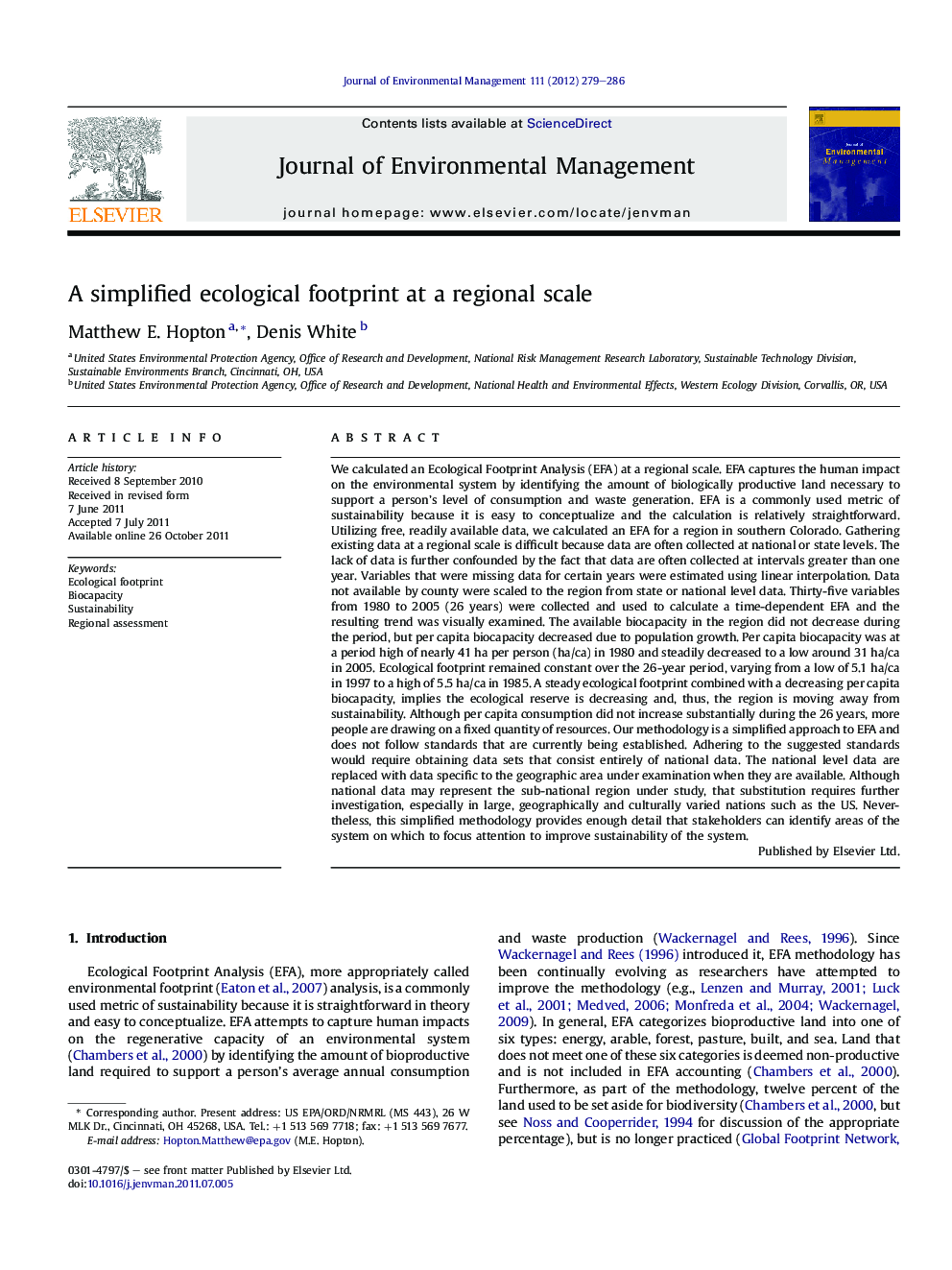| کد مقاله | کد نشریه | سال انتشار | مقاله انگلیسی | نسخه تمام متن |
|---|---|---|---|---|
| 1056567 | 1485301 | 2012 | 8 صفحه PDF | دانلود رایگان |

We calculated an Ecological Footprint Analysis (EFA) at a regional scale. EFA captures the human impact on the environmental system by identifying the amount of biologically productive land necessary to support a person’s level of consumption and waste generation. EFA is a commonly used metric of sustainability because it is easy to conceptualize and the calculation is relatively straightforward. Utilizing free, readily available data, we calculated an EFA for a region in southern Colorado. Gathering existing data at a regional scale is difficult because data are often collected at national or state levels. The lack of data is further confounded by the fact that data are often collected at intervals greater than one year. Variables that were missing data for certain years were estimated using linear interpolation. Data not available by county were scaled to the region from state or national level data. Thirty-five variables from 1980 to 2005 (26 years) were collected and used to calculate a time-dependent EFA and the resulting trend was visually examined. The available biocapacity in the region did not decrease during the period, but per capita biocapacity decreased due to population growth. Per capita biocapacity was at a period high of nearly 41 ha per person (ha/ca) in 1980 and steadily decreased to a low around 31 ha/ca in 2005. Ecological footprint remained constant over the 26-year period, varying from a low of 5.1 ha/ca in 1997 to a high of 5.5 ha/ca in 1985. A steady ecological footprint combined with a decreasing per capita biocapacity, implies the ecological reserve is decreasing and, thus, the region is moving away from sustainability. Although per capita consumption did not increase substantially during the 26 years, more people are drawing on a fixed quantity of resources. Our methodology is a simplified approach to EFA and does not follow standards that are currently being established. Adhering to the suggested standards would require obtaining data sets that consist entirely of national data. The national level data are replaced with data specific to the geographic area under examination when they are available. Although national data may represent the sub-national region under study, that substitution requires further investigation, especially in large, geographically and culturally varied nations such as the US. Nevertheless, this simplified methodology provides enough detail that stakeholders can identify areas of the system on which to focus attention to improve sustainability of the system.
► We calculated an Ecological Footprint Analysis (EFA) at a regional scale from 1980 to 2005 (26 years).
► A steady ecological footprint combined with a decreasing biocapacity, implies the region is moving away from sustainability.
► Our methodology is a simplified approach to EFA and does not follow standards that are currently being established.
► This methodology provides enough detail for stakeholders to identify areas of the system to focus attention to improve sustainability of the system.
Journal: Journal of Environmental Management - Volume 111, 30 November 2012, Pages 279–286